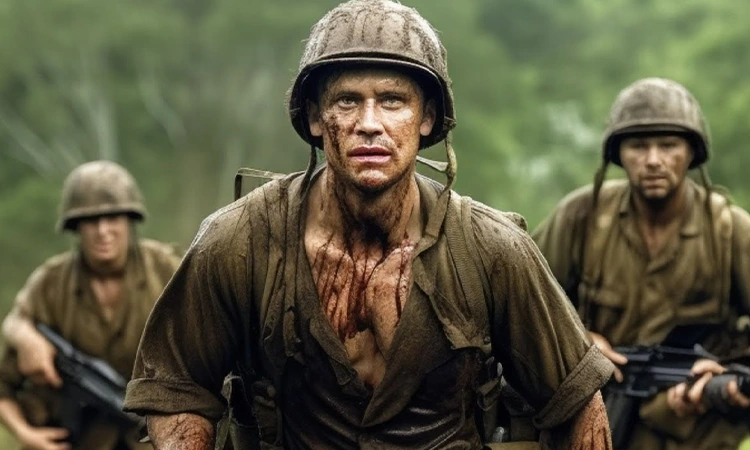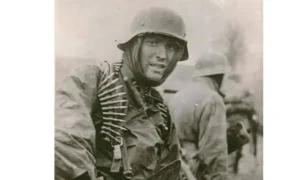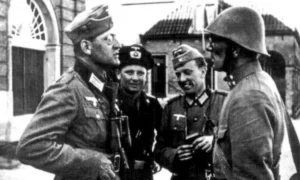Ever scroll through an old WWII pic and go, “Wait, dude’s a Marine? But he’s rockin’ Army gear, what gives?” Yeah, you’re definitely not the only one. Seriously, if you poke around old war archives long enough, you’ll spot a bunch of uniform mashups that’d send any hardcore collector into a minor meltdown. Marines in Army jackets, Army guys lugging Marine stuff, everybody just kinda blending together.
Thing is, combat doesn’t really give a rip about dress codes.
Back then especially out in the Pacific, where chaos reigned and supply ships got lost or bombed or just didn’t show guys grabbed whatever kept them alive and dry. You got handed an Army helmet? Strap it on. Issued a random cartridge belt that wasn’t “regulation” for your branch? Who cares, as long as it held bullets and didn’t fall apart. At the end of the day, you just wanted stuff that worked. Fancy insignia and matching sets? Nice in theory. Not so much when you’re up to your knees in mud getting shot at.
So, here’s what I’m getting at: we’re about to wade into this weird, muddy overlap. Why Marines and Army dudes swapped gear, what exactly got swapped, how you can actually tell the difference (if you’re into that sort of nerdy detail and hey, no judgment), and why it’s still a big deal for collectors and history buffs. Let’s cut through the confusion and dig into what really happened when the whole “uniform” thing went straight out the window.
Why Were Marines Wearing Army Gear in WWII?
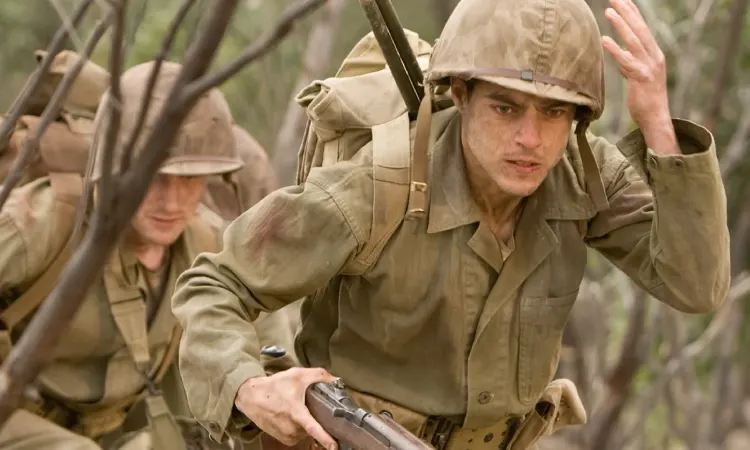
You’d probably do a double take wait, is that a Marine rocking Army gear? Looks like someone’s in the wrong closet, right? But nah, that was just how things rolled in the Pacific during World War II. Total chaos, supplies running low, people grabbing whatever worked. Survival mode, basically.
The Marines? Yeah, they’ve always been proud, all about their own look and attitude. But honestly, out there at Guadalcanal or Iwo Jima, style points took a backseat to not dying. The Army had way bigger supply chains more gear, more everything. So, guess what? If a Marine’s boots fell apart or helmets vanished, they didn’t wait around for some perfect Marine-issue replacement. Army stockpile to the rescue.
It wasn’t just the odd item, either. Stuff like the M1 helmet, Garand rifles, those chunky field jackets, cartridge belts, leggings totally up for grabs between Army and Marines. Sometimes the Marines straight up got handed Army gear through official supply. Other times, they were just training alongside Army guys and got whatever was lying around. Uniform purity? Please. Nobody cared. It was about staying in one piece.
Honestly, all this gear-swapping just blurred the lines between the services. In the heat of a firefight, nobody’s checking if your jacket’s got the right patch. You just want your stuff to work. So yeah, Marines wearing Army kit in WWII? Not just a thing—it was the norm. And honestly, it probably saved a lot of lives.
What Army Gear Did Marines Actually Use?
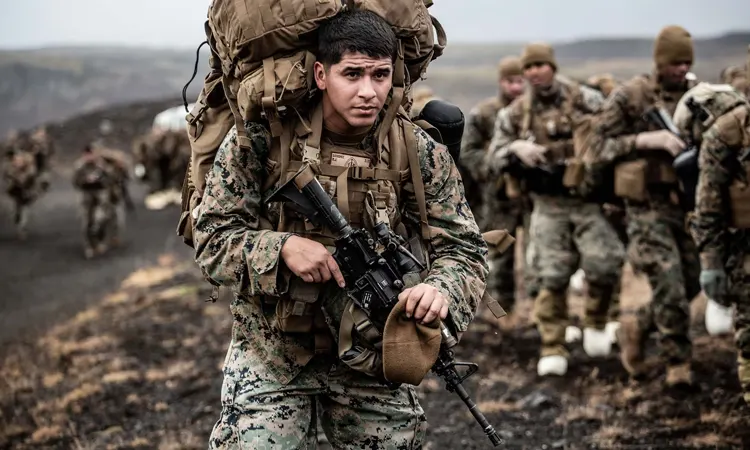
Alright, let’s be real—gear swapping between the Army and Marines in WWII was basically the military’s version of “Hey, you using that?” Stuff moved around way more than most history books wanna admit. Here’s a quick rundown of Army gear that ended up in Marine hands, not just as a one-time thing but as a regular field hustle:
1. M1 Helmet
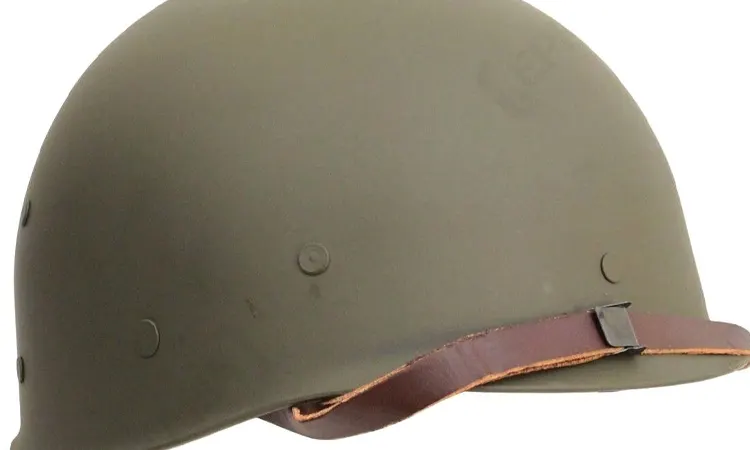
That classic, brain-bucket steel pot? Early on, Army and Marines were literally rocking the same lid. Later, some Marines tried to jazz it up with camo covers, but honestly, half the time you couldn’t tell who was who in those old Pacific photos. Everyone looked like they were heading to the same costume party.
2. M1 Garand Rifle
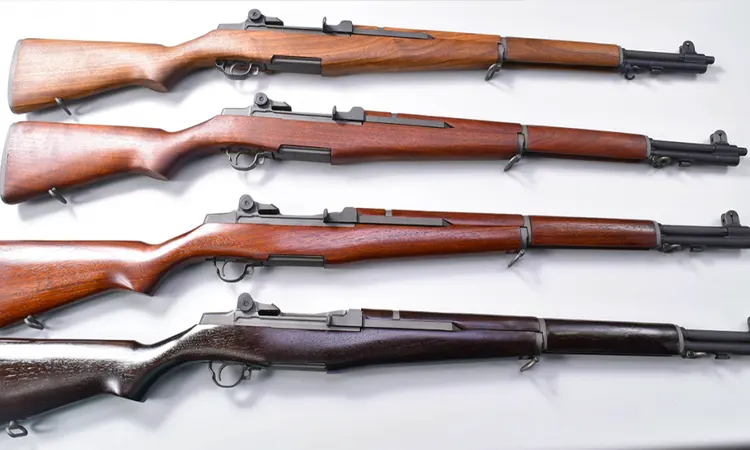
At first, the Garand was strictly Army issue—Marines were still stuck with those slow Springfield bolt-actions. But once the Garand started showing up in Marine units, they didn’t look back. Semi-auto, reliable, and could really spit lead. Perfect for those close-quarters jungle brawls.
3. Cartridge Belts
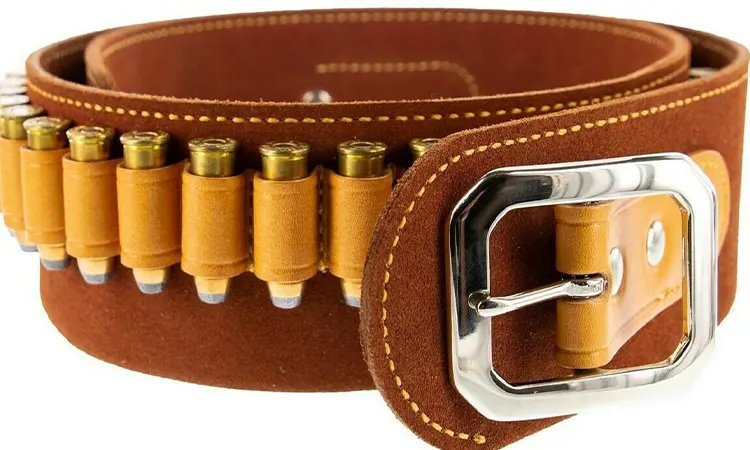
Marines rocked a lot of Army cartridge belts, especially the M1923 ones. Think of them as the original tactical fanny pack—ammo, grenades, random tools, snacks (probably). Standard-issue and tough as nails, so it made sense to hand them out to whoever needed extra pockets.
4. Canvas Haversacks and Packs
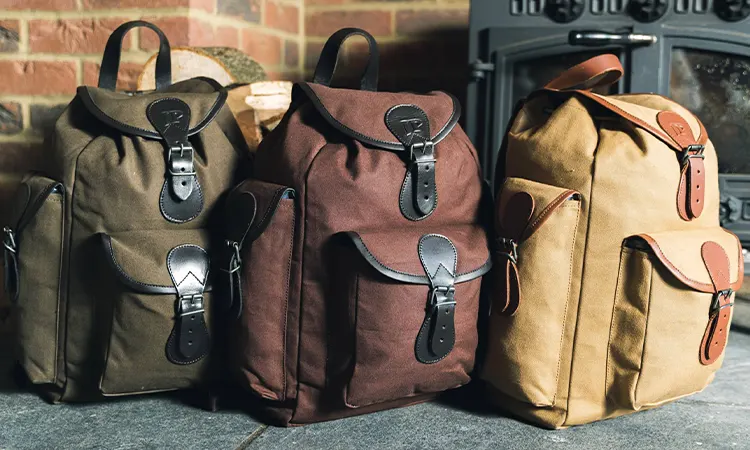
When the Marines ran short on their own gear, they’d just grab whatever Army canvas stuff was around. Haversacks, suspenders, straps—you name it. They all did the same job anyway. Mix-and-match was the name of the game.
5. Field Jackets (M1941)
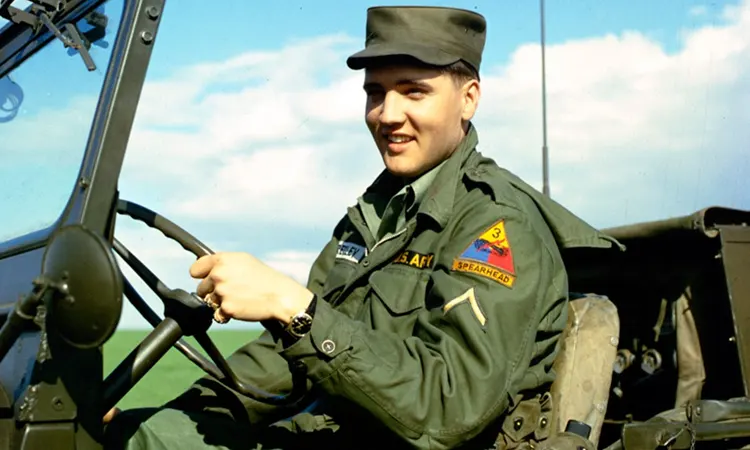
If you see a photo of a Marine in a lightweight, olive-drab jacket looking kinda chilly? Yeah, that’s probably an Army M1941 field jacket. Marines wore them especially for cold-weather training or when Mother Nature decided to get weird.
6. Leggings
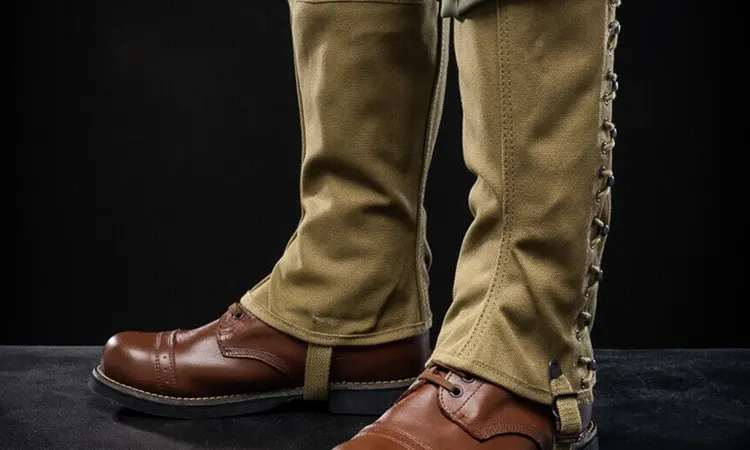
Canvas leggings were everywhere, but the Army made way more of ‘em. Marines just borrowed from the surplus pile, especially when slogging through mud or hacking through jungle. Kept the leeches and ankle sprains (sorta) at bay.
7. Entrenching Tools (Shovels)
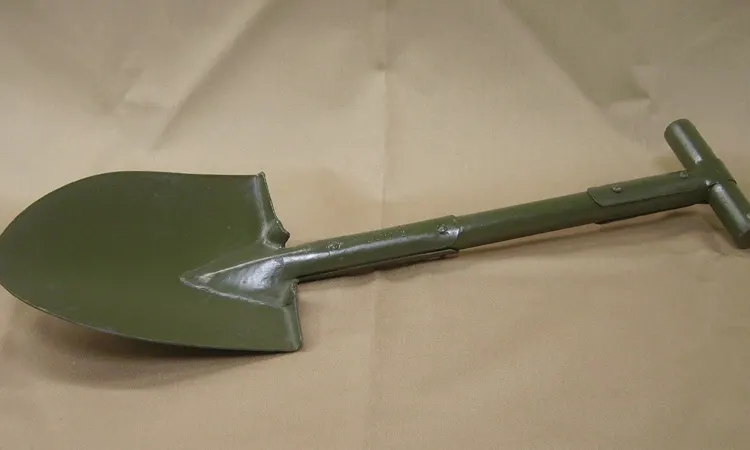
Army E-tools, aka portable shovels, got around. Marines used them for everything—digging foxholes, building flimsy defenses, or just whacking stuff in a pinch. Not pretty, but you gotta work with what you got.
8. Canteens and Covers
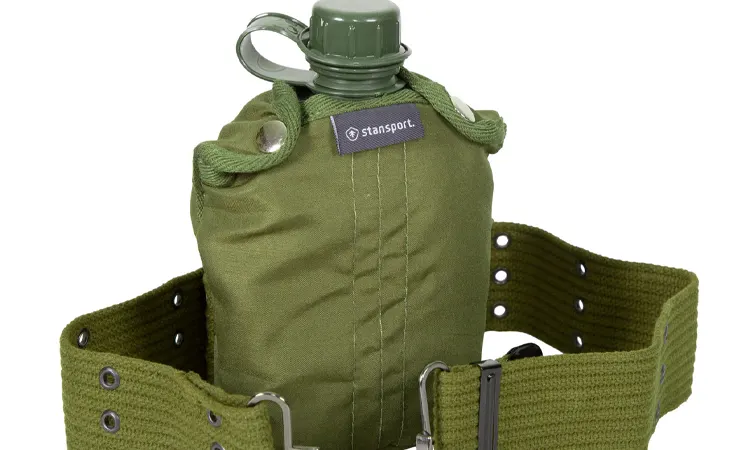
Let’s be honest, nobody cared what was stamped on the canteen as long as it held water. Army versions were everywhere, so Marines just grabbed whatever kept them hydrated. Thirsty is thirsty.
So yeah, don’t buy the Hollywood image of each branch with their own shiny, unique gear. Out in the mud and chaos, it was a free-for-all—and Marines weren’t picky.
Common Army Gear Adopted by WWII Marines
| Army Gear Item | Used by Marines? | Why It Was Used |
|---|---|---|
| M1 Helmet | Yes | Widely available; eventually shared across both branches |
| M1 Garand Rifle | Yes | Issued later in the war; Marines preferred it to bolt-action |
| Canvas Cartridge Belts | Yes | Sturdy and plentiful; useful for ammo and tools |
| M1941 Field Jacket | Yes | Used in colder climates; Army surplus filled Marine shortages |
| Entrenching Tools | Yes | Essential for foxholes; Marines used Army E-tools when needed |
Spotting the Difference: Marines VS Army in Mixed WWII Gear
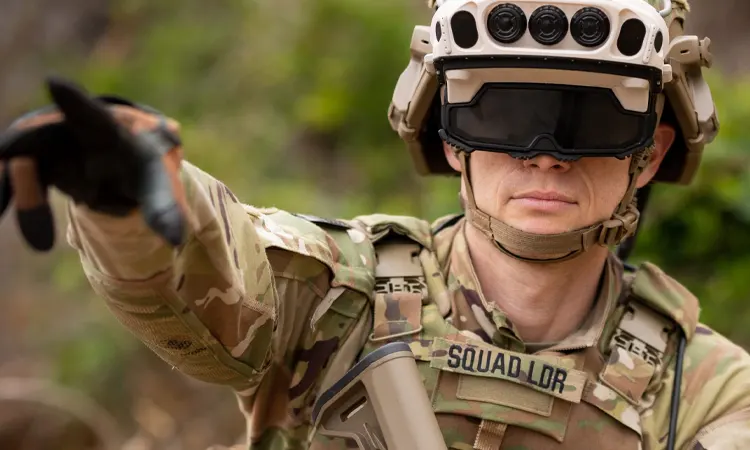
To most folks, a Marine decked out in Army gear just blends in with the crowd just another GI in olive drab, right? But man, for the die-hards collectors, reenactors, those weirdos who sniff canvas at flea markets it’s the tiny details that make all the difference. Those little quirks? They’re like breadcrumbs leading you through history.
Let’s talk uniforms. Marines rocked the P41 utilities, boxy as a shipping crate, usually with that “USMC” stamp slapped on the chest. Army guys? They got the M1941 field jacket—short, sort of snazzy collar or the post-’43 version with its own vibe. You grab a random jacket and you’re squinting at the stitching or tugging at the fit, hoping for some clue. Trust me, the cut matters.
Then there’s the helmet situation. Pacific Marines? Kinda iconic with those camo cloth covers—think jungle chic. Army stayed basic: just that steel pot, nice and plain. But here’s the kicker: early-war Marines didn’t bother with covers half the time. So, don’t get cocky just because you see camo doesn’t mean Marine, and a bare helmet isn’t always Army. Gotta look at the bigger picture.
Markings yeah, that’s where things get spicy. Canteens, web belts, packs they might look like twins, but check for those “USMC” or “U.S.” stamps, weird depot codes, or faint dates. Sometimes a Marine literally grabbed whatever was lying around, Army stamp or not, because war isn’t exactly a shopping spree. But original Marine gear usually has these subtle ink marks or pressed letters that make collectors drool.
Weapons? Oh yeah, they tell a story too. Both branches used the M1 Garand, sure, but early on, Marines clung to their old Springfield 1903 bolt-actions like a security blanket. Spot a bolt-action in a Guadalcanal photo? Odds are, you’re looking at a Marine—at least before the Garand flood hit.
So why obsess over all this? Well, for the history nerds, it’s about getting the story right—figuring out how guys adapted, improvised, survived. Collectors? It’s bragging rights, honestly—owning a real Marine artifact instead of Army surplus. And reenactors, bless ‘em, just want to look the part and pay proper tribute.
Final Thoughts
Here’s the thing about World War Two uniforms: what you see isn’t always what you get. Picture a Marine rocking Army gear—wasn’t some mix-up. Sometimes, that’s just what made sense in the chaos out there. Folks weren’t worried about fashion shows, trust me. They grabbed what worked, period. Digging into these stories isn’t just some nerdy trivia thing, either. It’s about respecting the grit and hustle those guys had, making stuff work under pressure, doing what they had to do.
If you’re a collector or just obsessed with history (guilty as charged), figuring out if a jacket’s Army or Marine isn’t just a party trick. It’s a way to get closer to the real deal. Sometimes it’s the shape of the pocket, maybe a weird shade of green, or that barely-there “USMC” stamp hidden inside a bag. That’s the stuff that separates just old junk from something that actually matters, you know?
And that’s where miltrade.com comes in hot. We built it for people who care about the real stuff—the folks who want the legit gear, not cheap knockoffs. Want to buy, sell, or just nerd out over World War gear? You’re in the right spot. We know the difference between an Army cartridge belt and a Marine field pack—seriously, don’t try to slip a fake past us. Our whole community does, too.
So, next time you spot a piece of gear that doesn’t quite match the label, don’t just shrug it off. Take a closer look. Maybe it’s not a mistake at all. Maybe it’s a story—a Marine making do, doing whatever it took. That’s the kind of history that deserves a second look, a little respect, and, honestly, to be passed down.
FAQs
Did the Marines really use Army gear in WWII?
Yes, they did. Out in the Pacific, looks didn’t matter—it was all about surviving. Marines used whatever got the job done, and much of that came straight from Army supplies.
Which Army gear was most common with Marines?
Gear such as M1 helmets, Garand rifles, cartridge belts, and field jackets were quite common. If a Marine’s own gear wore out, they grabbed what was available.
How do I determine whether WWII equipment is Army or Marine issue?
It’s in the details—stamps, stitching, the cut. Marine utilities would have “USMC” stamped in, the Army gear having “U.S.” or depot codes. Miltrade listings help determine the variations.
Why should collectors care about the gear crossover?
Because accuracy matters. Being aware of what a Marine wore vs. what he borrowed teaches collectors how to accurately assess items. That’s why Miltrade filters listings and promotes historically accurate sales.
Where do I find original WWII Marine or Army gear?
MilTrade.com is where I go. It’s for individuals who know (or want to know) the difference between surplus and significance. No copycat. Just the real deal.
